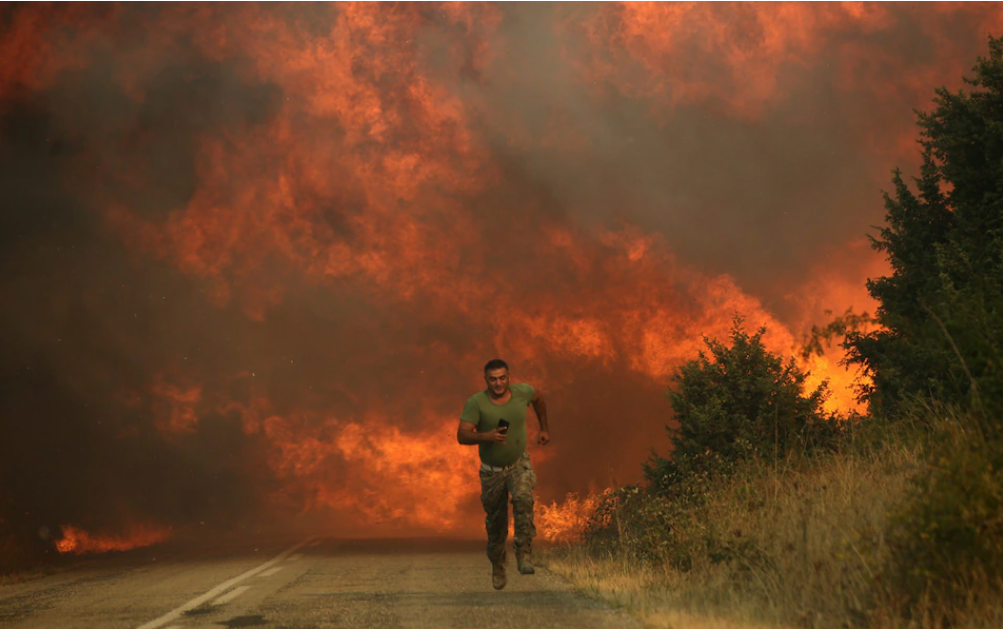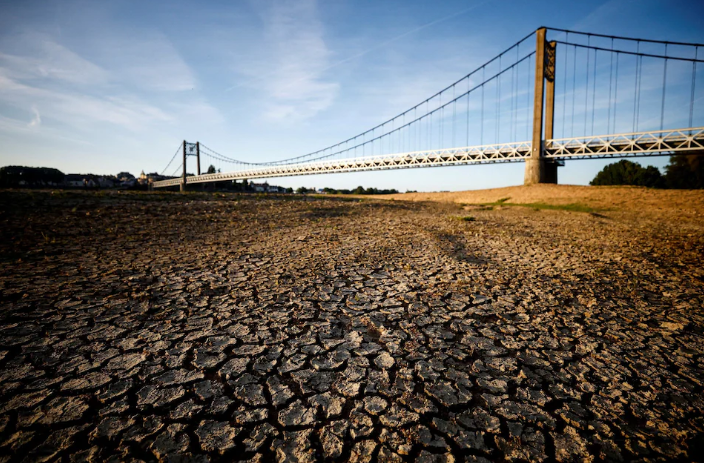Researchers tracking the link between climate change and health say the adverse impacts are far-reaching

New diseases are spreading, the hayfever season is starting earlier and even the hours in which it is possible to practise sports are changing.
The common denominator behind all these and other changes to human health is climate change.
A new report in the Lancet has found that warming temperatures in Europe have far reaching impacts on health.
It tracks the links between climate change and health across the region, exploring 42 indicators.
As scorching summers hit the continent, heat-related deaths per 100,000 people have increased by 30.8 per cent from the period 2003-12 and 2013-22, according to the report.
Now 68 people per 100,000 are estimated to die of heat related issues, up from 50.8.
“Climate change is here, in Europe, and it kills,” the 2024 Europe Report of the Lancet Countdown on Health and Climate Change said.

From raging wildfires in Greece to near-record high river flows in major basins, including the Rhine and Danube, 2023 saw a record number of days with “extreme heat stress”, according to the World Health Organization.
It caused the number of adverse health impacts related to extreme weather and climate events to rise.
In 2022, which also saw extreme heat, upwards of 70,000 people in Europe were killed during the summer months.
The Lancet report found that Southern Europe tends to be more affected by heat-related illnesses, wildfires, food insecurity and drought.
It also said that Southern Europe is also “more vulnerable” to climatic suitability for various climate-sensitive pathogens and disease vectors.
Research has found that environmental changes, like rising temperatures, can amplify disease risk in a variety of ways.
Climate change can alter animal movements and habitats, bringing new species into contact and allowing them to swap pathogens.
Newly introduced species can bring new pathogens with them as they move north from warmer climates.
The report found that populations of bacterium Vibrio and ticks, which can spread diseases like Lyme disease and tick-borne encephalitis, are “on the rise across Europe”.
Vibrio is a “flesh-eating” bacterial infection that thrives in warm sea waters. People become infected by swimming in the sea with open wounds – even those as small as a papercut – or through the consumption of infected oysters and other shellfish.
The diseases posing a threat across the continent also include West Nile virus, dengue, chikungunya, Zika, malaria and leishmaniasis.
Regular physical activity could also be in jeopardy.
Risky hours for exercise have been expanding into hours beyond the hottest part of the day over time for both medium, such as cycling, football, and tennis, and strenuous, such as rugby or mountain biking, activities.
Comparing 2012–22 to 1990–2000, the mean annual risky hours per person for moderate intensity activities falling outside the hottest four hours of the day increased by 107 per cent in eastern Europe, 382 per cent in northern, 94 per cent in southern and 101 per cent in western.
The report highlighted that this could “result in reduced physical activity” and therefore increase the risk of “non-communicable diseases”.
It said that regular physical activity is a key component of a healthy sustainable lifestyle, but that exercising in hot weather poses a risk of heat-related illnesses, such as heat exhaustion or exertional heat stroke.
The warming climate could be bad news for hayfever sufferers.
The start and end date of the pollen season is shifting and becoming longer in length.
Allergenic pollen is “substantially affected” by weather conditions, with climate change leading to “systematic shifts” in flowering seasons of most plants, the Lancet said.
These changes can impact both the severity of allergic diseases, which are estimated to be “prevalent in at least 40 per cent of the European population”.
The report concluded that a lack of political action to protect people from climate change is one of the biggest issues facing Europe.
Many European countries remain major contributors to greenhouse gas emissions, and are still providing net subsidies for fossil fuels – despite their health harms.
Current trajectories show that carbon neutrality could be far away, potentially as late as 2100, showing that the road to net-zero simply isn’t fast enough.
“Limiting global warming to less than 1.5C degrees through a just and healthy transition would deliver life-saving benefits for people across Europe and beyond. Instead of facing ill health and threats to our livelihoods,” said Professor Cathryn Tonne, co-Director of the Lancet Countdown in Europe.
Professor Rachel Lowe, from the London School of Hygiene and Tropical Medicine, added: “We are feeling the cost of delayed action already.”
Article Credit: telegraph